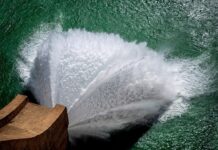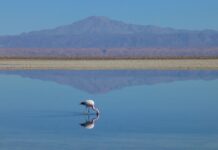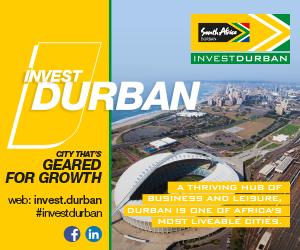Acid mine water is one of the many environmental challenges faced by resource-rich Mpumalanga. Daily Maverick puts the number of “abandoned, ownerless or derelict mines” across South Africa above 6 000. In 2022 one of these, Khwezela Colliery at Kromdraai, experienced what the current owners describe as an “uncontrolled release of mine-impacted water” which led to severe environmental damage downstream.
This mine was among the package of coal assets purchased from Anglo American by Thungela Resources, a multi-phase deal which was finalised in 2022.
The pollution plume affected approximately 60km of river ecosystem, threatened aquatic life and created risks for local communities. Since then, Thungela has invested approximately R1-billion in various activities. These include:
- Active treatment plant: R380-million
- Wetlands: R80-million
- Passive treatment plant: R18-million
- Kromdraai Phytoremediation Project: R2-million
- Construction of nursery: R4.1-million
- Loskop fish breeding facility: R3.3-million
- Addressing illegal mining: +R500-million
- Dongalocks: R20-million
Dongalock is an environmentally friendly technology used in wetland and river rehabilitation programmes to manage the risk of stormwater damage and flooding in vulnerable areas and passive-water treatment projects.
The Council for Geoscience has highlighted the dangers that oil and rock subsidence above abandoned coal mines carry, especially in the Witbank area. Not only can sinkholes occur but water movement channels can be materially altered, leading to unexpected events.
Exxaro has spent R3-billion on creating a digital twin of its Belfast mine in Mpumalanga. Using the example of Exxaro, two authors from financial services company Mazars have outlined the benefits of using AI-powered technology in mining. They argue that digital twin enables an innovative approach to mining and can create a safer and more efficient environment.
Predictive maintenance, improved productivity and the elimination of downtime are further concrete benefits that will come with the increasing adoption of AI. The Mazars authors state that a recent survey conducted by the Minerals Council South Africa showed that more half of its members are already piloting various AI-powered tools while another 25% are looking to do so in the next five years.
The acquisition of the liquidated Mintails operations will increase Pan African Pan African Resources’ gold production by about 50 000oz once steady production is reached at the end of 2024. The company currently has production capacity in excess of 200 000oz of gold per annum. R400-million of a R2.5-billion funding arrangement was released by Rand Merchant Bank in March 2023.
Loadshedding in 2023 slowed the process of getting the Barberton operations running at optimum levels. The company reported in May of that year that it had lost 10 000oz worth of production because of power cuts. Tests are proving that the decision to extend deep mining at Barberton was correct. Pan African Resources reports “potential high-grade extensions to the orebodies at Fairview, Royal Sheba and Consort mines”.
Contribution
Mining contributes 25.9% of the province’s gross domestic product and employs more than 53 000 people. Mpumalanga accounts for 83% of South Africa’s coal production and is the third-largest coal-exporting region in the world. Although renewable energy is catching on in South Africa, there is no prospect of Mpumalanga’s coal-fired power stations being mothballed soon.
Council for Geoscience (CGS) CEO Mosa Mabuza reports that research is ongoing into finding ways to capture carbon produced at coal-burning power stations. The CGS is doing extensive research into the existing baseline environmental conditions on the ground so that future activities can be carefully monitored and measured against something concrete.
Tests done by the CGS indicate that not only are there mineral resources other than coal in the ground in Mpumalanga, but there is groundwater too.

Afrimat, previously listed on the JSE in the “Construction and Building Materials” section, has changed its classification to “General Mining”, a recognition of the company’s ambitious buying programme in the Northern Cape and Mpumalanga. With construction and building now contributing just 20% to operating profit, Afrimat is active in anthracite and iron ore and will further expand into phosphates, rare earth elements and vermiculite. Among its new acquisitions, Afrimat now controls the Nkomati Anthracite mine in Mpumalanga. The mine, which is in the south-eastern corner of the province, has proven resources of 8.7-million tons and upwards of 400 jobs were created over the last two years. Local communities have a 16.1% stake in the relaunched mine and the Mpumalanga Economic Growth Agency (MEGA) holds 34%.
Platinum
Platinum is an important mineral for the modern economy. Two Rivers is a joint venture between Implats (46%) and African Rainbow Minerals which is located on the southern part of the eastern limb of the Bushveld Igneous Complex, 35km south-west of Burgersfort in Mpumalanga. Northam Platinum, which has assets on both limbs of the Bushveld Igneous Complex, has purchased the Everest mine from Aquarius Platinum. Everest is adjacent to Northam’s existing Booysendal mine.
Jubilee Platinum has sold its Smelting and Refining business in Middelburg to Siyanda Resources. Sylvania Platinum now has seven PGM recovery plants that extract chrome from tailings on both sides of the Bushveld Igneous Complex.
Lydenburg is home to the Lion ferrochrome smelter that is a joint venture between Glencore and Merafe Resources. Assmang, the joint venture between ARM Ferrous and the JSE-listed Assore, operates a chrome mine (Dwarsrivier) and a ferrochrome plant where chrome alloys are made.
Mining Sector Resources
- Council for Geoscience: www.geoscience.org.za
- Minerals Council South Africa: www.mineralscouncil.org.za
- South African Institute of Mining and Metallurgy: www.saimm.co.za









